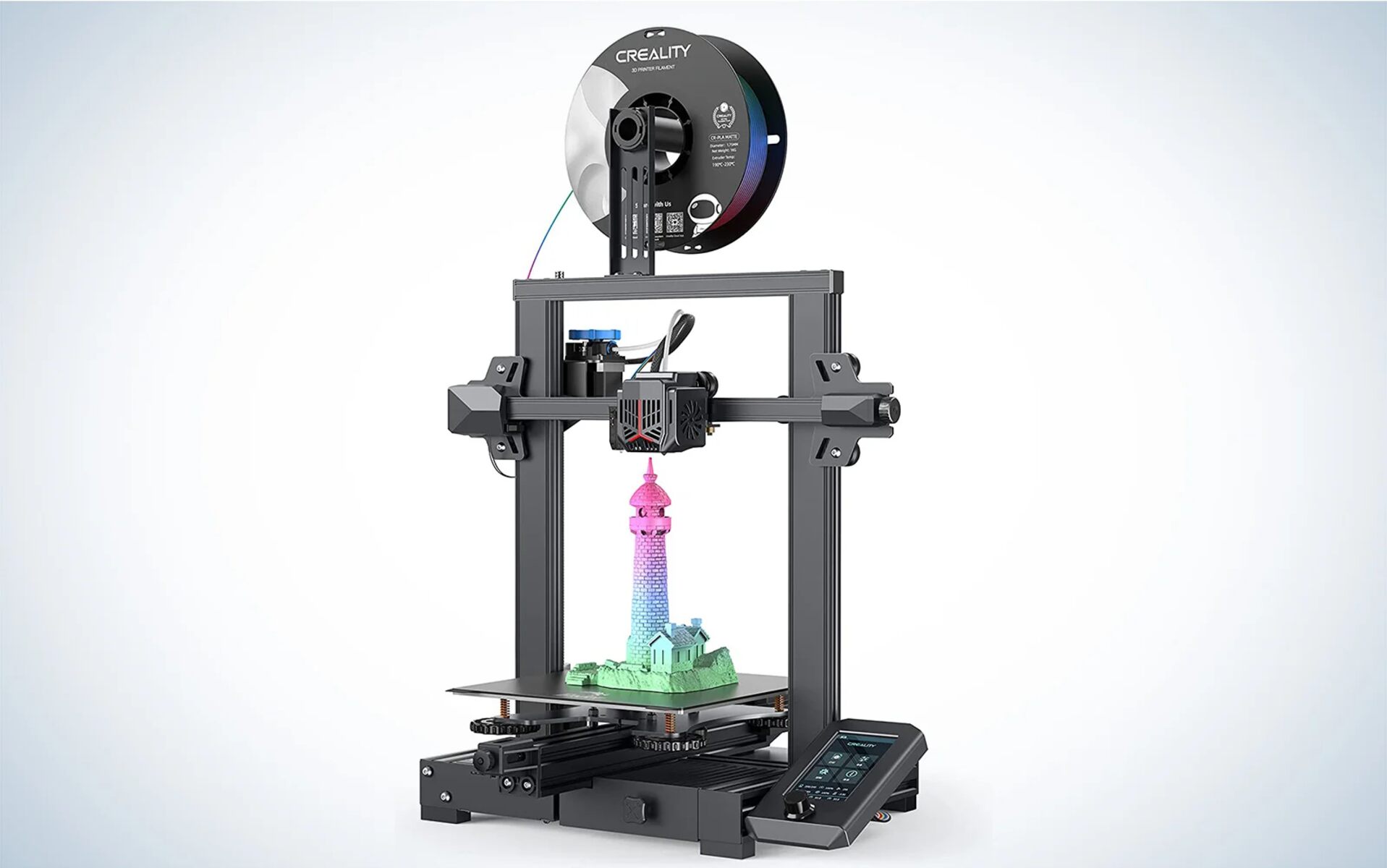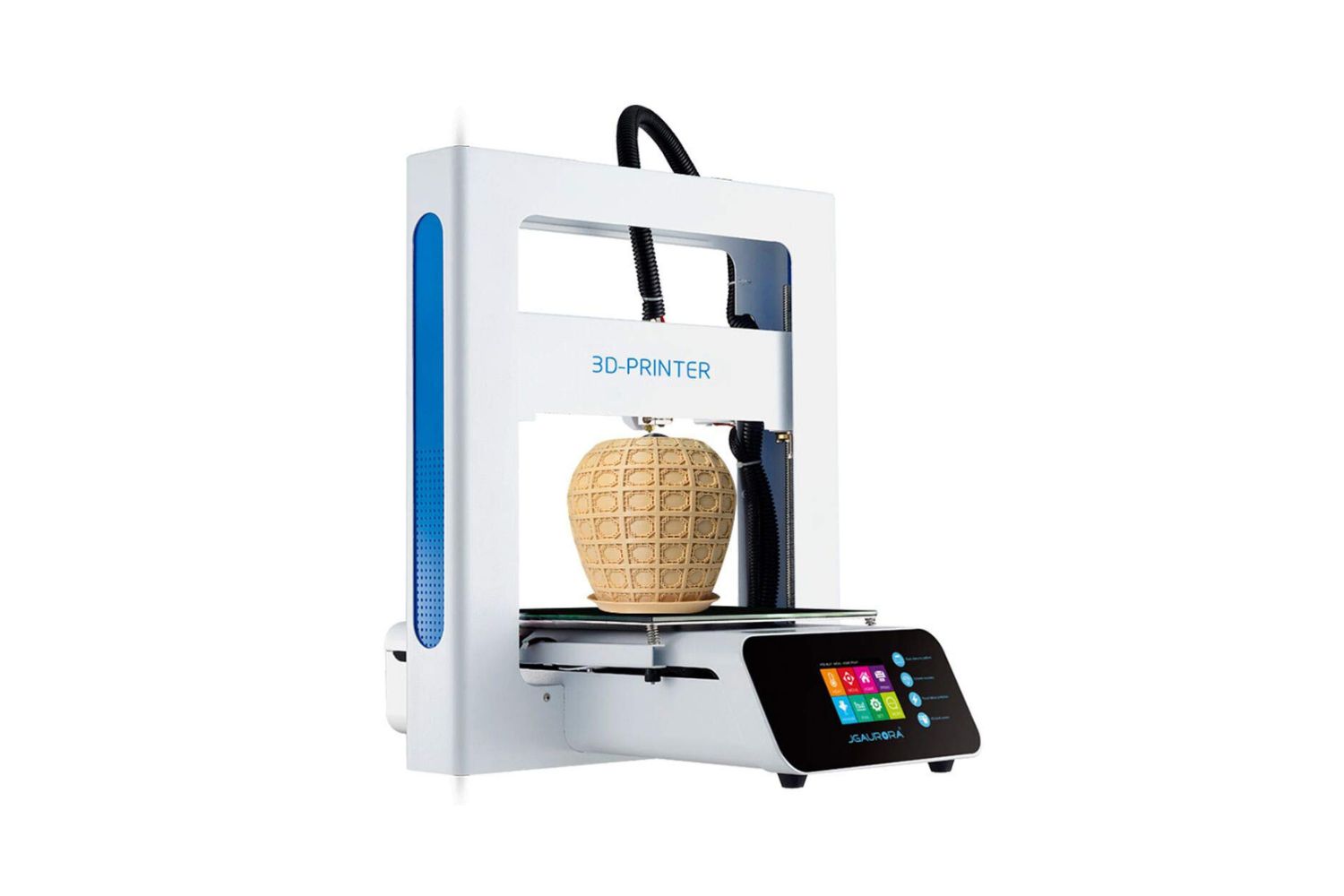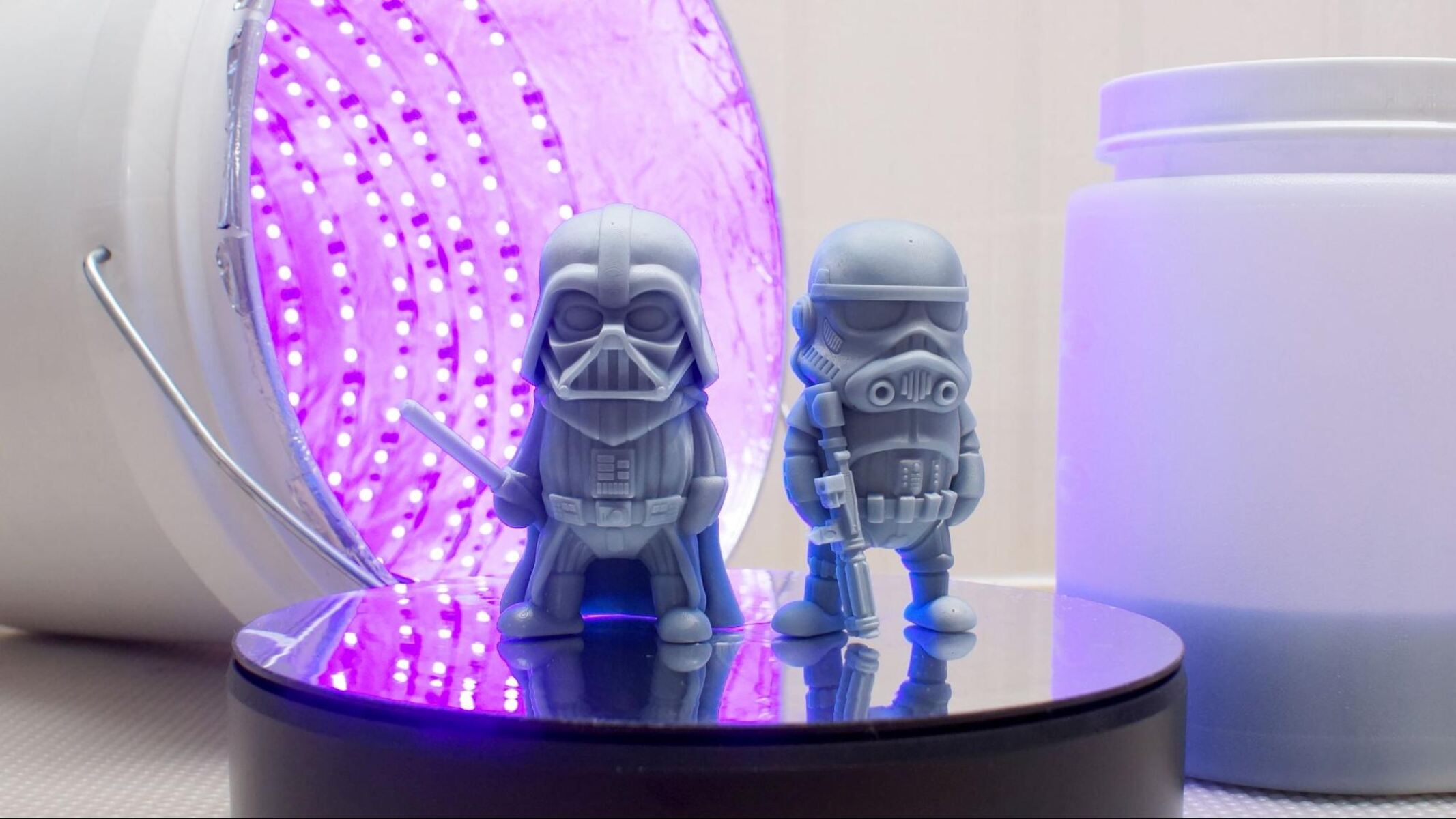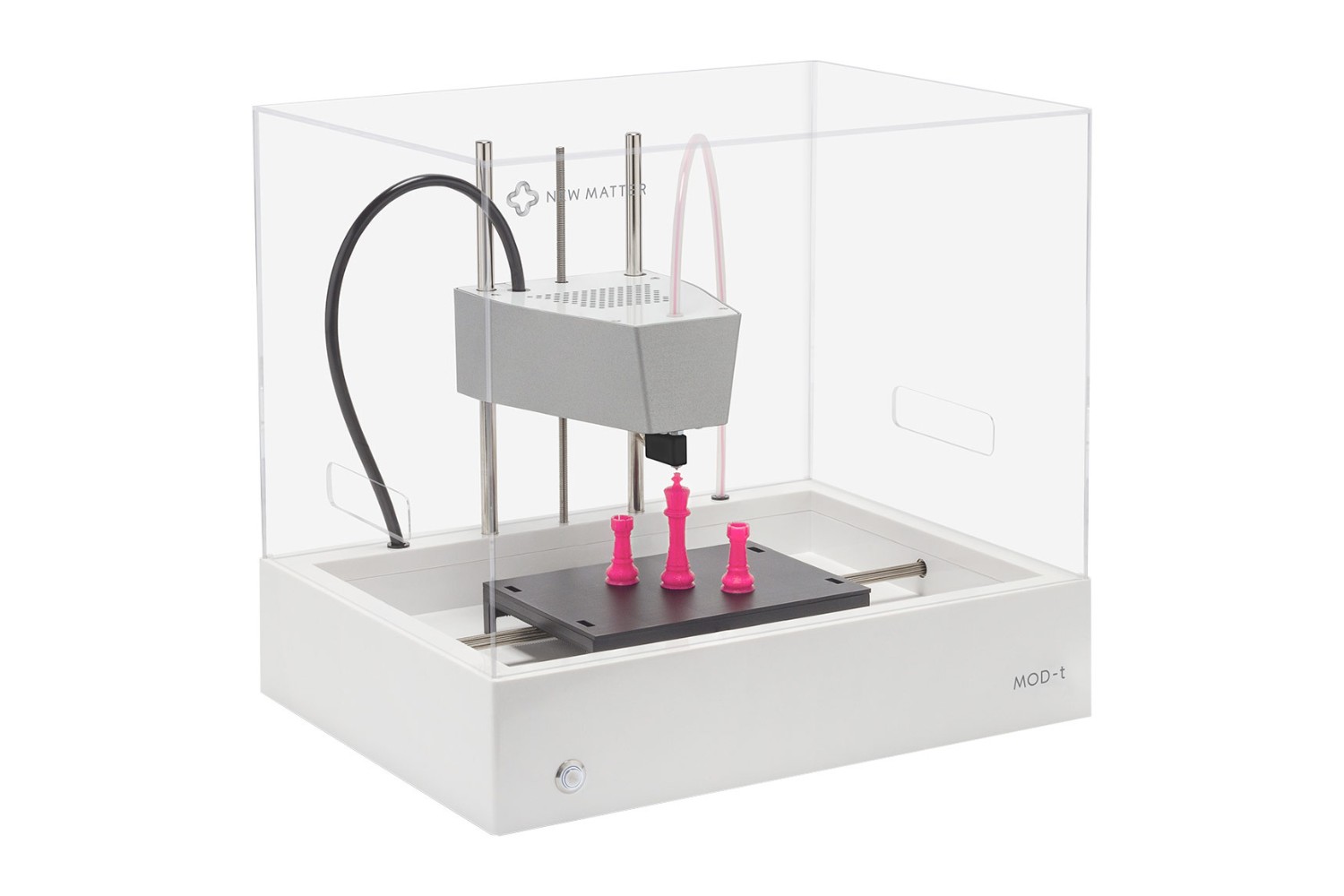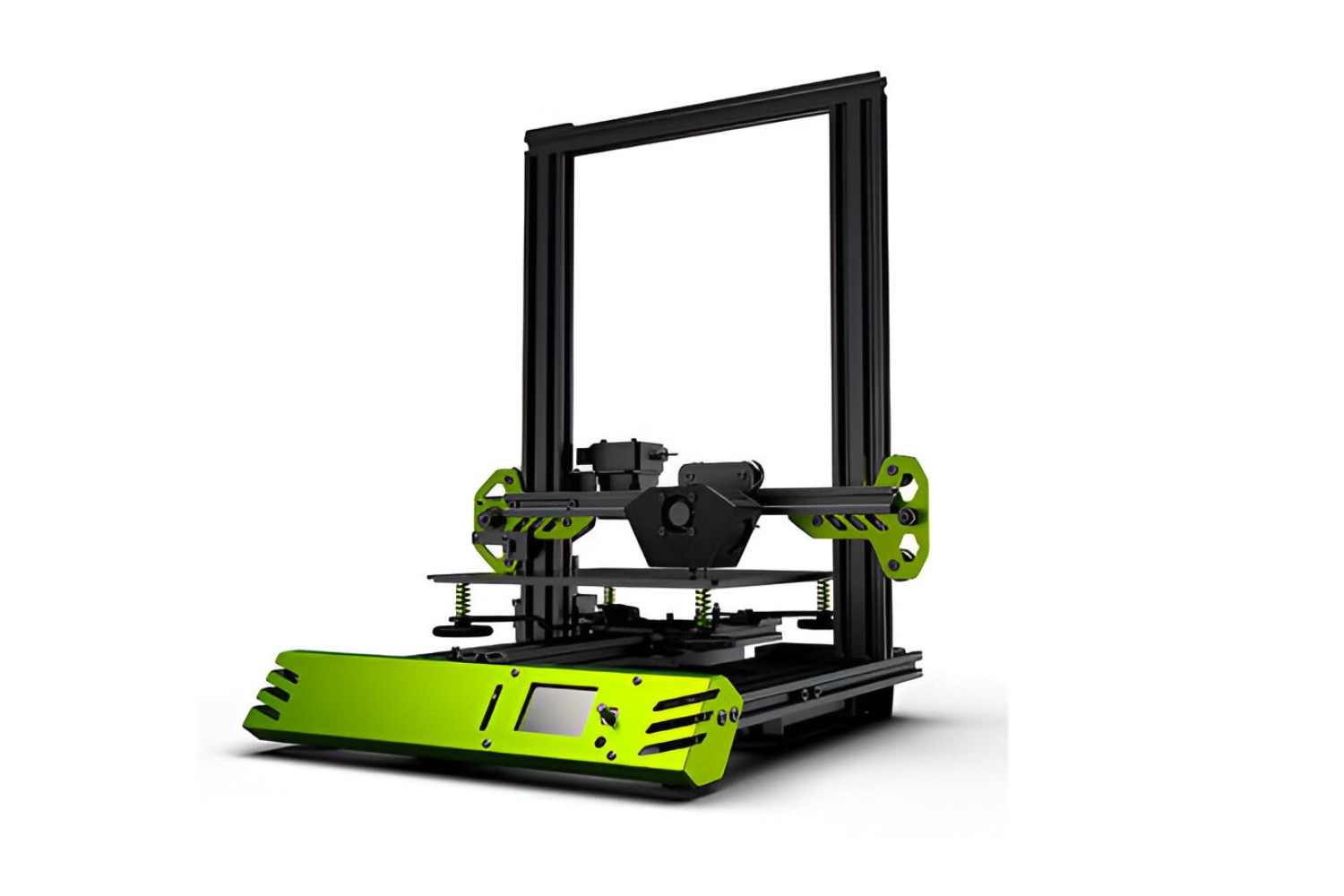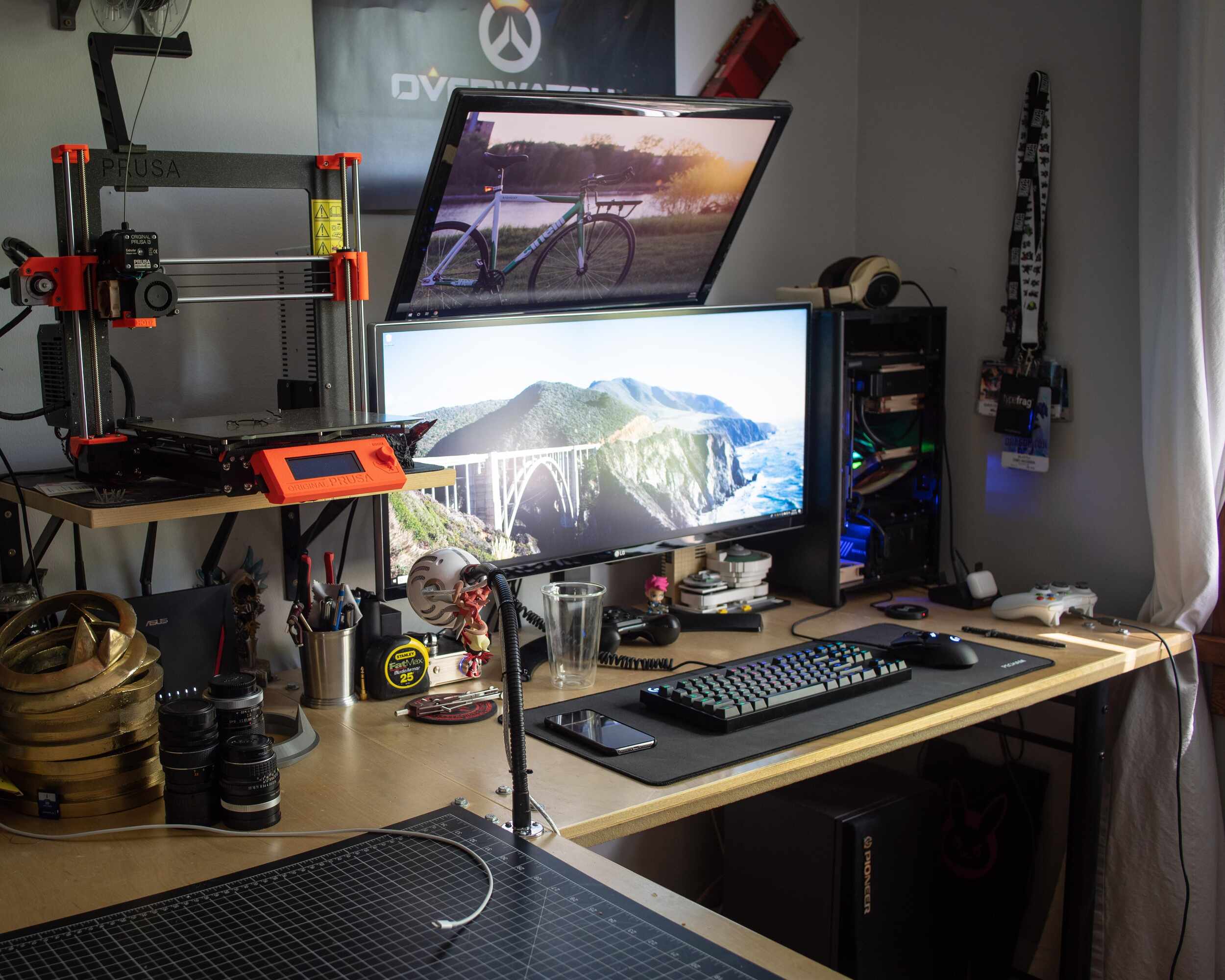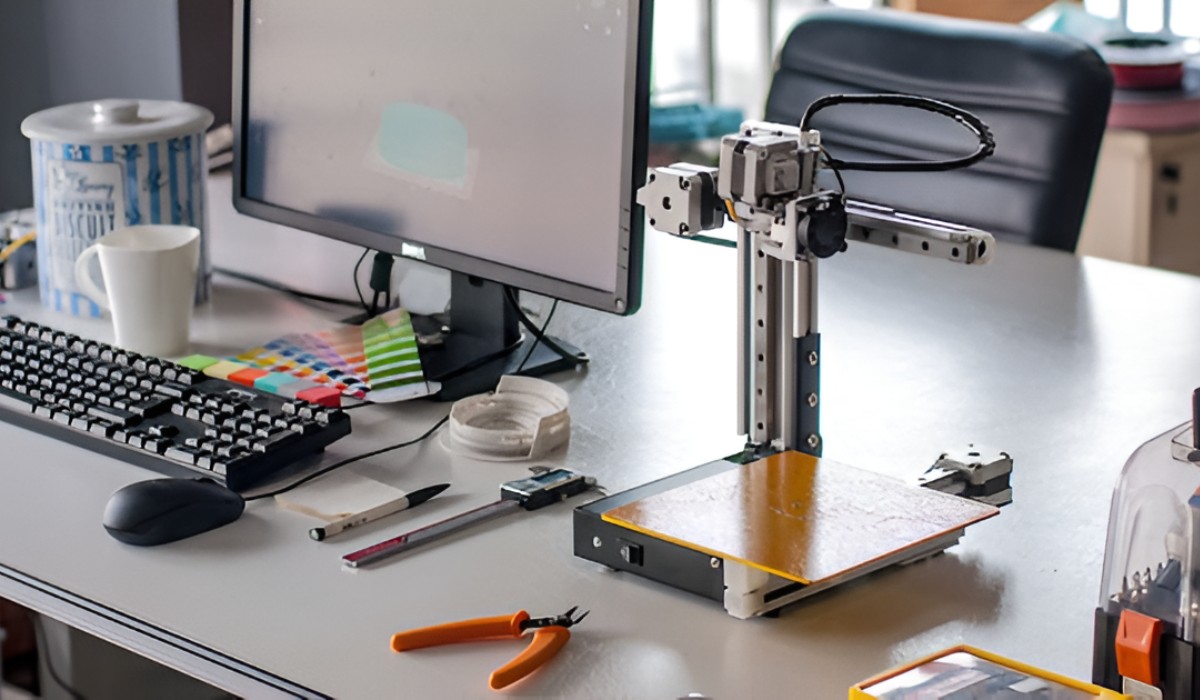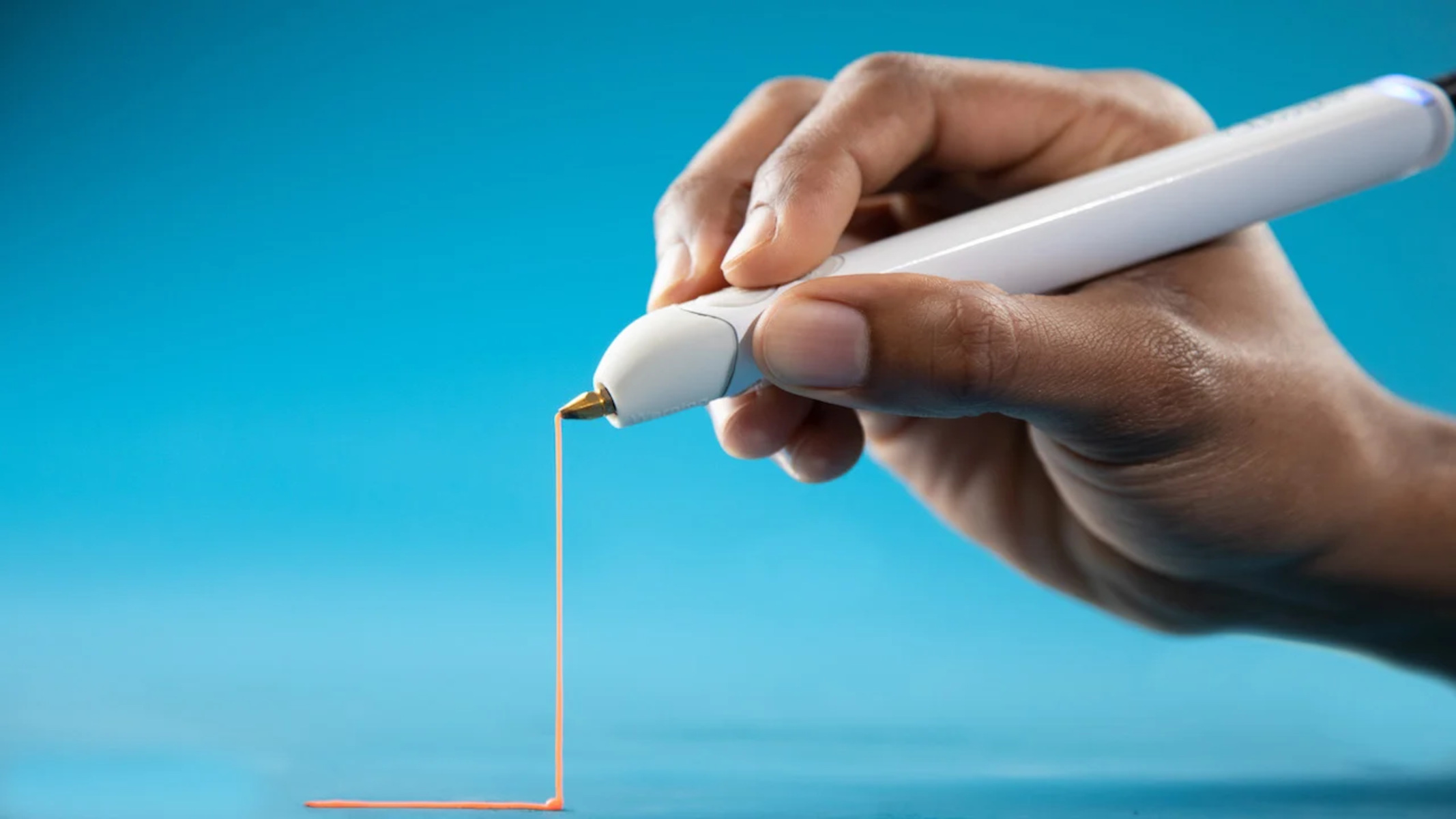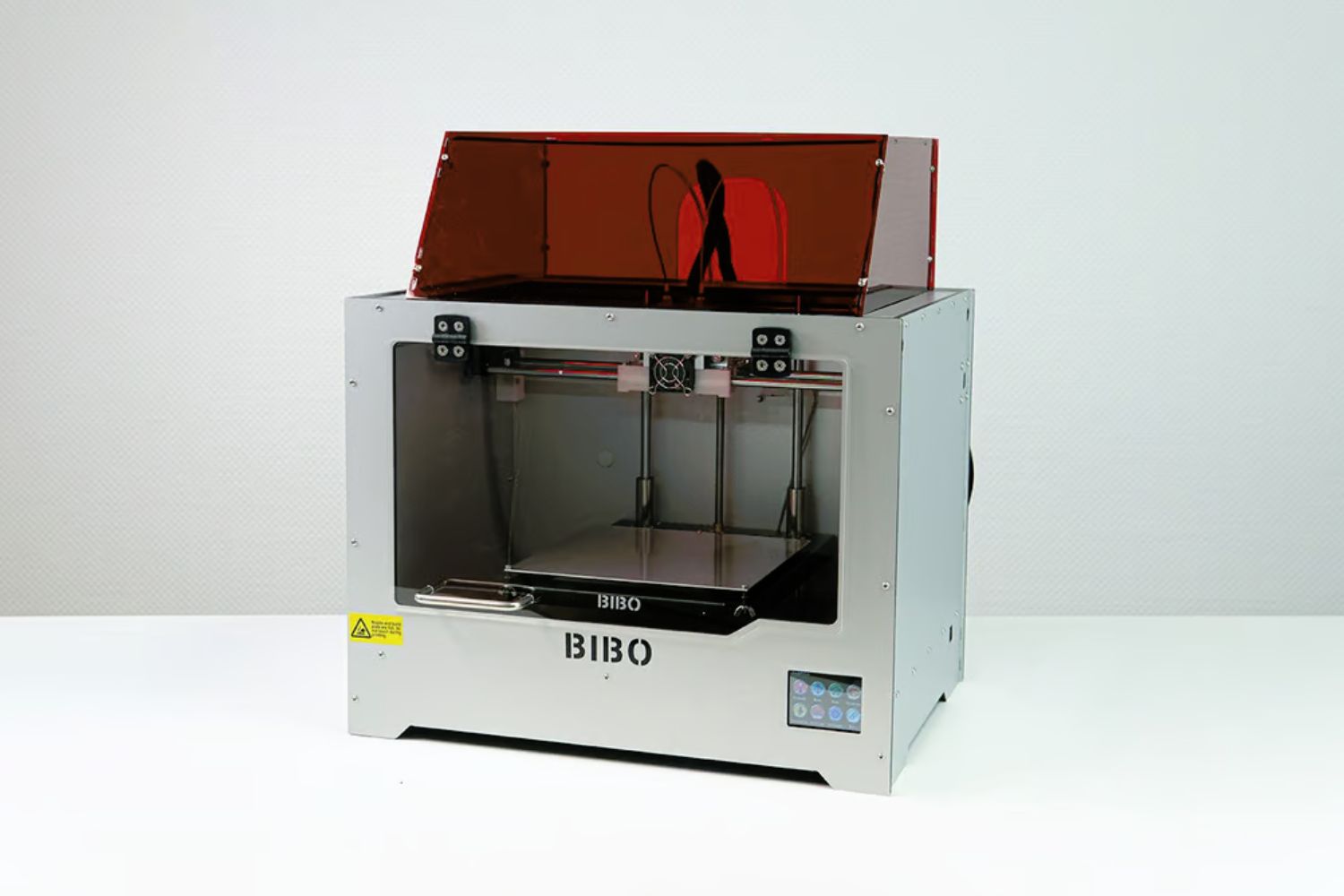Introduction
Welcome to the exciting world of 3D printing! In recent years, this innovative technology has gained immense popularity in various industries, revolutionizing the way we create and manufacture objects. From intricate prototypes to customized products, 3D printing offers limitless possibilities.
But what exactly is a 3D printer? How does it work? And what applications does it have in today’s world? In this article, we will explore the fascinating world of 3D printing, its benefits, and its many applications. Whether you are a beginner or someone looking to expand your knowledge, this article will serve as a comprehensive guide to this groundbreaking technology.
A 3D printer is a device that can turn digital designs into physical objects. Instead of relying on traditional subtractive manufacturing methods, such as cutting or drilling, 3D printing follows an additive process. It builds objects layer by layer using materials such as plastic, metal, or even organic matter.
The concept of 3D printing originated in the 1980s, but it wasn’t until recent advancements in technology and accessibility that it gained mainstream attention. Today, 3D printers are becoming more affordable and user-friendly, making them accessible to individuals, small businesses, and large-scale manufacturing industries alike.
With a 3D printer, you can bring your ideas to life and create physical objects with precision and intricacy that may not be achievable with traditional manufacturing techniques. From detailed architectural models to personalized jewelry, the possibilities are limited only by your imagination.
Within the realm of 3D printing, there are various technologies and techniques that can be used. Each has its unique advantages and applications. Whether it’s fused deposition modeling (FDM), stereolithography (SLA), or selective laser sintering (SLS), each method offers different approaches to creating objects with different materials and levels of complexity.
In the following sections, we will delve deeper into the workings of 3D printers, explore their various applications, and provide tips and insights to help you navigate the world of 3D printing. So, let’s embark on this journey and discover the limitless possibilities that 3D printing has to offer.
What Is a 3D Printer?
A 3D printer is a device that utilizes additive manufacturing technology to create three-dimensional objects. Unlike traditional manufacturing methods that remove material from a solid block or mold, 3D printers build objects layer by layer using various materials. This innovative process allows for the production of complex geometries and intricate designs with high precision and accuracy.
The heart of a 3D printer lies in its ability to interpret digital models and convert them into physical objects. The printer reads the digital design file, which is typically in the form of a computer-aided design (CAD) file, and slices it into thin cross-sectional layers. It then proceeds to deposit material layer by layer, following the instructions provided by the digital model.
One of the key components of a 3D printer is the print head or extruder. The print head heats the material, typically in the form of filament or resin, to its melting point and then deposits it onto the build platform or previous layers. As the material cools and solidifies, it fuses with the previous layers, gradually building up the object as per the digital model.
3D printers can utilize various materials, depending on the specific technology and the desired end result. Commonly used materials include thermoplastics like PLA or ABS, metals such as titanium or aluminum, resins for highly detailed objects, and even food-safe materials for culinary applications.
It is worth noting that there are different types of 3D printers available, each utilizing distinct technologies. Some of the popular ones include:
- Fused Deposition Modeling (FDM): This is the most common 3D printing technology, where the printer extrudes thermoplastic filament through a heated nozzle to create the object layer by layer.
- Stereolithography (SLA): SLA uses a liquid resin that is photopolymerized using ultraviolet (UV) light to solidify the layers of the object.
- Selective Laser Sintering (SLS): In SLS, a high-powered laser selectively fuses powdered material, such as nylon or metal, to create the object layer by layer.
These are just a few examples, and the technology is constantly evolving, offering new possibilities and advancements in additive manufacturing.
Overall, 3D printers are powerful tools that have the potential to revolutionize various industries. From prototyping and manufacturing to medicine and education, the applications of 3D printing are vast and ever-expanding. In the next sections, we will explore these applications and delve deeper into the inner workings of 3D printers.
How Does a 3D Printer Work?
To understand how a 3D printer works, let’s take a closer look at the general steps involved in the printing process. Although the details may vary depending on the specific technology and printer model, the underlying principles remain relatively consistent.
1. Creation of a Digital Model: The first step in 3D printing is creating a digital model of the desired object. This can be done using computer-aided design (CAD) software or by scanning an existing object using a 3D scanner. The digital model serves as a blueprint for the 3D printer to follow.
2. Slicing: Once the digital model is prepared, it needs to be sliced into thin layers. Slicing software, specific to the printer model, breaks down the model into hundreds or thousands of two-dimensional cross-sectional layers.
3. Preparation of the Printer: Before printing can commence, the 3D printer needs to be prepared. This involves ensuring the print bed is clean and properly leveled, and the appropriate printing materials, such as filament or resin, are loaded into the printer.
4. Printing Process: Once the printer is ready, the actual printing process can begin. The printer follows the instructions from the sliced digital model and begins depositing material layer by layer. The material is typically melted, extruded through a nozzle (in the case of FDM printers), or solidified using UV light (in the case of SLA printers).
5. Layer-by-Layer Construction: The printer builds the object layer by layer, starting from the bottom and working its way up. Each layer fuses or solidifies with the previous layer, gradually forming the final 3D object. This layer-by-layer construction allows the printer to create intricate designs and complex geometries.
6. Post-Processing: Once the printing process is complete, the object may require some post-processing. This could involve removing supports or rafts that were used for stability during printing, sanding or polishing the surface, or applying additional coatings or finishes to enhance the object’s appearance or functionality.
It’s important to note that the time required for printing varies depending on the size and complexity of the object, as well as the printing technology and settings used. Larger and more intricate objects may take several hours or even days to print, while smaller and simpler objects can be completed in a matter of minutes.
With advancements in 3D printing technology, printers now have the ability to print multiple materials or colors simultaneously, resulting in even more versatile and realistic objects.
Understanding the basics of how a 3D printer works allows us to appreciate the intricacy and precision involved in additive manufacturing. In the next sections, we will explore different types of 3D printing technologies and dive deeper into their individual processes and applications.
Types of 3D Printing Technologies
3D printing encompasses a range of technologies, each with its own unique approach to creating objects. Understanding the different types of 3D printing technologies can help you choose the right method for your specific needs. Let’s explore some of the most common types:
- Fused Deposition Modeling (FDM): FDM is one of the most widely used 3D printing technologies. It works by melting a thermoplastic filament, typically made of materials like PLA or ABS, and depositing it layer by layer onto the build plate. The material then solidifies, creating the final object. FDM is known for its affordability, ease of use, and accessibility.
- Stereolithography (SLA): SLA printers utilize a liquid resin that is photopolymerized using ultraviolet (UV) light. The printer uses a laser or a DLP (Digital Light Processing) projector to selectively cure the resin layer by layer, creating the desired object. SLA printing offers high precision and the ability to produce intricate details. It is commonly used in applications where accuracy and surface quality are crucial, such as jewelry making or prototyping.
- Selective Laser Sintering (SLS): SLS printers operate by using a high-powered laser to selectively fuse powdered materials, such as nylon or metal, to build the object layer by layer. This technology enables the creation of durable, functional parts with complex geometries. SLS is often utilized in industrial applications where strength and precision are essential.
- PolyJet Printing: PolyJet printing is similar to inkjet printing but instead of ink, it uses UV curable liquid photopolymers. The printer jets layers of liquid material onto the build platform, and each layer is cured with UV light. This technology enables the printing of objects with multiple materials and colors simultaneously, making it ideal for producing prototypes and realistic models with complex textures and finishes.
- Binder Jetting: Binder jetting is a technology that works by selectively depositing layers of a powdered material, such as sand or metal, and then using a liquid binder to bind the powder together and form the object. It is known for its ability to create large-scale objects quickly and cost-effectively, making it suitable for architectural models, sand casting molds, and more.
These are just a few examples of the many 3D printing technologies available today. Each technology comes with its own advantages, limitations, and applications. It is important to consider factors such as material compatibility, desired resolution, surface finish, and budget when choosing the right technology for your specific needs.
As technology continues to advance, new printing techniques and materials are constantly being developed, expanding the possibilities of what can be accomplished with 3D printing. From bioprinting to carbon fiber composites, the future of 3D printing holds exciting prospects.
Now that we have explored the different types of 3D printing technologies, let’s move on to the next section, where we will examine the numerous benefits that 3D printing offers.
Benefits of Using a 3D Printer
3D printing offers a multitude of advantages that have made it a game-changer in various industries. Let’s explore some of the key benefits of using a 3D printer:
1. Design Flexibility: With 3D printing, designers and engineers have unparalleled flexibility in creating complex shapes and intricate geometries that may be impossible or extremely difficult with traditional manufacturing methods. This allows for the production of customized, one-of-a-kind products and prototypes.
2. Cost Savings: 3D printing eliminates the need for expensive tooling and molds, which are typically required for traditional manufacturing. This reduces upfront costs and makes it cost-effective to produce small batches or individual items on-demand, reducing inventory costs and eliminating the need for storage.
3. Rapid Prototyping: 3D printing enables the rapid production of prototypes. Designers can quickly iterate and refine their designs, saving time in the development process. This accelerates product innovation and allows for faster time-to-market.
4. Material Efficiency: Traditional manufacturing processes often produce more waste as material is carved or cut away. 3D printing, on the other hand, is an additive process, where material is only deposited where it is needed. This reduces material waste and contributes to environmental sustainability.
5. Enhanced Product Customization: 3D printing makes it possible to easily customize products to suit individual preferences and specific requirements. From personalized consumer products, such as custom phone cases or jewelry, to medical implants tailored to a patient’s unique anatomy, 3D printing opens up a world of customization possibilities.
6. Distributed Manufacturing: 3D printing enables localized and decentralized manufacturing. Instead of relying on centralized factories and global supply chains, 3D printers can be placed in closer proximity to consumers, reducing transportation costs, carbon emissions, and the time it takes for products to reach end-users.
7. Accessibility and Creativity: As 3D printing technology becomes more affordable and user-friendly, it empowers individuals with the ability to turn their ideas into reality. It promotes innovation and creativity by democratizing the manufacturing process and making it accessible to a wider audience.
8. Education and Learning: 3D printing has enormous potential in education, allowing students to engage in hands-on learning and explore concepts in a tangible way. It encourages critical thinking, problem-solving, and design skills, preparing the next generation for future careers in engineering and manufacturing.
These are just a few of the many benefits that 3D printing provides. It has transformed industries such as healthcare, automotive, aerospace, and fashion by offering unprecedented advantages in design flexibility, cost efficiency, and customization. As the technology continues to evolve, we can expect even more remarkable benefits to emerge.
Now that we’ve explored the benefits of 3D printing, let’s dive into the diverse range of applications where this technology is making a significant impact.
Applications of 3D Printing
3D printing has revolutionized numerous industries, introducing new possibilities and transforming the way we create and manufacture objects. Let’s explore some of the key applications of 3D printing:
1. Rapid Prototyping: 3D printing has greatly accelerated the prototyping process, allowing designers and engineers to quickly create physical prototypes of their designs for testing and validation. This enables faster design iterations and reduces the time and cost associated with traditional prototyping methods.
2. Manufacturing and Production: 3D printing is increasingly being used for small-scale production and manufacturing. It offers the ability to produce complex, customized parts on-demand and eliminates the need for costly molds or tooling. This makes it particularly beneficial in industries such as aerospace, automotive, and medical devices.
3. Healthcare and Medicine: 3D printing has made remarkable advancements in the field of healthcare. It is used to produce customized prosthetics, orthodontic aligners, hearing aids, and even patient-specific implants. Additionally, it enables the creation of anatomical models for surgical planning, enhancing the precision and effectiveness of procedures.
4. Education and Research: 3D printing has become a valuable tool in educational institutions, allowing students to bring their ideas to life and enhance their learning experience. It promotes hands-on learning, encourages creativity, and enables students to explore concepts in a tangible way. Moreover, researchers utilize 3D printing to create prototypes and models for their experiments and studies.
5. Architecture and Construction: 3D printing has made significant advancements in the field of architecture and construction. It enables architects to create intricate, detailed models for visualization and presentation purposes. Additionally, 3D printing can be utilized for large-scale construction projects, with the ability to create complex shapes and structures with ease.
6. Fashion and Jewelry: 3D printing has introduced new dimensions to the world of fashion and jewelry. Designers can create unique, intricate jewelry pieces with complex geometries that may be impossible to achieve using traditional methods. Customization is a key advantage, allowing individuals to have personalized accessories.
7. Food and Culinary Arts: Yes, even food can be 3D printed! 3D food printing allows for the creation of unique and visually stunning dishes. It opens up possibilities in food customization and presentation, offers solutions for those with dietary restrictions, and has the potential to revolutionize the way food is prepared and consumed.
8. Art and Creative Expression: 3D printing has become a medium for artists to express their creativity and push the boundaries of traditional art forms. Artists can create intricate sculptures, unique installations, and even wearable art using this technology, merging art and technology in captivating ways.
These are just a few examples of the diverse applications of 3D printing. From manufacturing to healthcare, education to art, the impact of this technology is far-reaching and continues to expand into new domains. As 3D printing evolves, we can anticipate even more innovative applications and exciting possibilities.
Choosing the Right 3D Printer for Your Needs
When it comes to selecting the right 3D printer, there are several factors to consider to ensure that it meets your specific requirements. Here are some key considerations when choosing a 3D printer:
1. Budget: Determine your budget for a 3D printer as prices can vary significantly depending on the technology, size, and features. Consider the long-term costs of materials, maintenance, and upgrades as well.
2. Purpose and Intended Use: Identify your specific needs and the purpose for which you require a 3D printer. Whether it’s rapid prototyping, small-scale production, or educational use, different printers cater to different applications.
3. Print Quality and Resolution: Evaluate the print quality and resolution offered by the printer. Consider the layer thickness or resolution capabilities and the level of detail required for your projects.
4. Build Volume: The build volume determines the maximum size of the objects you can print. Assess your requirements and ensure that the printer’s build volume is sufficient for the objects you intend to create.
5. Printing Technology: Understand the different 3D printing technologies available and their advantages and limitations. Consider which technology aligns with your specific needs in terms of material compatibility, surface finish, and level of complexity.
6. Material Compatibility: Check the printer’s compatibility with the materials you intend to work with. Different printers support different materials, ranging from filaments like PLA or ABS to specialty resins or even metals.
7. Ease of Use: Evaluate the user-friendliness of the printer, especially if you’re a beginner. Look for features such as intuitive software, easy setup, and a user-friendly interface that simplifies the printing process.
8. Support and Resources: Consider the availability of technical support, documentation, and online resources for the printer. Having access to a supportive community and guides can be invaluable, especially when troubleshooting or learning new techniques.
9. Additional Features: Look for additional features that may enhance your printing experience, such as automatic bed leveling, Wi-Fi connectivity, or a heated build plate. These features can improve print quality, convenience, and overall user experience.
10. Reviews and Recommendations: Research and read reviews from reputable sources to gain insights from other users’ experiences. Pay attention to feedback on print quality, reliability, and customer support.
By carefully considering these factors and aligning them with your specific needs, you can select a 3D printer that meets your requirements and helps you achieve your desired outcomes.
Once you have chosen your 3D printer, the next step is getting started with 3D printing. In the next section, we will provide you with some helpful tips to kickstart your 3D printing journey.
Tips for Getting Started with 3D Printing
Getting started with 3D printing can be an exciting and fulfilling journey. To help you make the most of this technology, here are some useful tips to guide you:
1. Start with a Beginner-Friendly Printer: If you’re new to 3D printing, consider starting with a printer that is known for its user-friendly interface and ease of use. This will help you get acquainted with the basics of 3D printing without feeling overwhelmed.
2. Learn the Basics of 3D Modeling: Familiarize yourself with 3D modeling software such as Tinkercad or Fusion 360. Learn the basics of designing 3D models and experiment with simple shapes before moving on to more complex designs. Many free online tutorials and resources are available to help you learn.
3. Optimize Print Settings: Experiment with different print settings such as layer height, print speed, and temperature to achieve the best balance between print quality and speed. Start with default settings and fine-tune them based on your specific needs and the characteristics of the material you are using.
4. Use Support Structures When Necessary: For objects with overhangs or complex geometries, utilize support structures to ensure successful prints. Support structures provide temporary support to prevent sagging or collapsing during the printing process. Most slicing software offers automatic support generation features.
5. Practice Bed Leveling: Proper bed leveling is crucial for successful 3D prints. Take the time to calibrate and level the print bed, ensuring a consistent and even first layer. Regularly check and adjust the bed level to maintain optimal printing conditions.
6. Experiment with Different Filaments: Explore different types of filaments such as PLA, ABS, PETG, or specialty materials like wood or flexible filaments. Each filament has its own unique properties and characteristics, opening up new possibilities for your prints. Experimenting with different filaments will allow you to discover their strengths and limitations.
7. Stay Organized with File Management: As you create more 3D models, it’s important to stay organized with file management. Create a system to name and categorize your designs so you can easily locate and retrieve them when needed.
8. Join Online Communities: Engage with the 3D printing community by joining online forums, social media groups, and dedicated 3D printing communities. These platforms provide opportunities to seek advice, share experiences, and learn from others in the field.
9. Expand Your Knowledge: Continuously explore and expand your knowledge of 3D printing. Stay updated with industry advancements, new techniques, and emerging trends by reading blogs, watching tutorials, and attending webinars or workshops.
10. Embrace Iteration and Practice: 3D printing is a learning process, and practice makes perfect. Embrace iteration, learn from each print, and don’t be afraid to experiment and make mistakes. With time and practice, your skills and understanding of 3D printing will grow.
Remember, getting started with 3D printing is an exciting journey of creativity and innovation. Embrace the learning process, be patient with yourself, and enjoy the wonderful world of 3D printing.
Common Challenges in 3D Printing and How to Overcome Them
While 3D printing is an incredible technology, it does come with its fair share of challenges. Understanding these challenges and knowing how to overcome them can help you achieve successful and satisfying 3D prints. Let’s explore some of the common challenges and their solutions:
1. Poor Adhesion or Warping: Sometimes, the first layer of a print may not adhere properly to the build plate, resulting in warping or detachment. To overcome this, ensure that the build plate is clean and level, use adhesion aids such as a brim or raft, adjust the print bed temperature, or consider using a heated chamber to maintain consistent temperature.
2. Stringing or Oozing: Stringing or oozing occurs when the extruder continues to release filament even when it is not printing. To minimize this issue, calibrate the retraction settings to reduce the amount of filament oozing during movement, and ensure that the print temperature is correctly set for the specific filament being used.
3. Print Layer Lines or Banding: Visible layer lines or banding on the surface of a print can occur due to various reasons, such as improper slicing settings or mechanical issues. To mitigate this issue, adjust the layer height and print speed, ensure the belts and rods of the printer are properly tensioned, and lubricate moving parts for smoother motion.
4. Insufficient Support Structures: When printing objects with overhangs or complex geometries, insufficient or poorly designed supports can lead to print failures. Ensure that proper support structures are generated by the slicing software, and if necessary, manually add or modify support structures to provide adequate support during printing.
5. Filament Jams or Clogs: Occasionally, the filament can jam or clog in the extruder nozzle, leading to interrupted or failed prints. Clearing a filament jam can be achieved by removing the clogged filament, unclogging the nozzle using a small wire or needle, and ensuring that the extruder temperature is set correctly for the filament material being used.
6. Print Inconsistencies: Inconsistent extrusion, layer adhesion, or print quality can occur due to issues such as filament inconsistencies or improper printer calibration. It is important to use high-quality filaments from reputable manufacturers, regularly calibrate and level the print bed, and fine-tune print settings to achieve consistent and reliable prints.
7. Model Errors or Design Issues: Sometimes, a 3D print may fail due to errors or design issues in the digital model itself. Check the model for non-manifold geometry, overlapping or intersecting parts, or gaps in the mesh. Use 3D modeling software to repair and optimize the model before printing.
8. Printing Time and Efficiency: 3D printing can be time-consuming, especially for larger and more complex prints. To optimize printing time, adjust print settings such as layer height and infill density to balance quality and speed. Additionally, consider using multiple printers for simultaneous printing to increase efficiency and productivity.
9. Post-Processing and Finishing: Depending on the desired final look and feel of a print, post-processing and finishing may be required. This can involve sanding, painting, or applying specialized coatings. Take the time to research and experiment with different post-processing techniques to achieve the desired results.
10. Continuous Learning and Improvement: Lastly, 3D printing is a continuous learning process. Embrace the challenges as opportunities for growth and improvement. Stay up-to-date with the latest advancements, seek advice from the community, and always be open to learning new techniques.
By understanding and addressing these common challenges, you can overcome obstacles in your 3D printing journey and achieve successful and high-quality prints. With persistence and a willingness to learn, you’ll be on your way to mastering the art of 3D printing.
Conclusion
3D printing has revolutionized the way we create and manufacture objects, offering unparalleled design flexibility, customization, and cost savings. From rapid prototyping and small-scale production to healthcare, education, and beyond, the applications of 3D printing are vast and diverse.
In this article, we explored the fundamentals of 3D printing, understanding how it works and the different types of printing technologies available. We also delved into the benefits of using a 3D printer, such as design flexibility, cost savings, and enhanced customization.
We discussed the various applications of 3D printing in industries ranging from healthcare and architecture to fashion and art, showcasing the transformative impact it has had across sectors. Moreover, we provided insights on how to choose the right 3D printer for specific needs and offered tips for getting started with 3D printing.
Additionally, we addressed common challenges in 3D printing and provided suggestions on how to overcome them. From ensuring proper adhesion and mitigating print quality issues to troubleshooting filament jams and optimizing print time, these tips can help navigate the obstacles that may arise during the printing process.
As 3D printing continues to advance, it offers immense potential for innovation, creativity, and problem-solving. By embracing this technology and staying up-to-date with the latest advancements, individuals, businesses, and industries can unlock new possibilities, streamline production processes, and redefine traditional manufacturing methods.
Whether you are a hobbyist, a designer, an engineer, or an entrepreneur, 3D printing empowers you to bring your ideas to life in a tangible and transformative way. With patience, practice, and a willingness to learn, you can embark on a rewarding journey of exploration and create objects limited only by your imagination.
So don’t hesitate to dive into the world of 3D printing and unleash your creativity. Embrace the challenges, enjoy the learning process, and discover the limitless possibilities that 3D printing has to offer.







